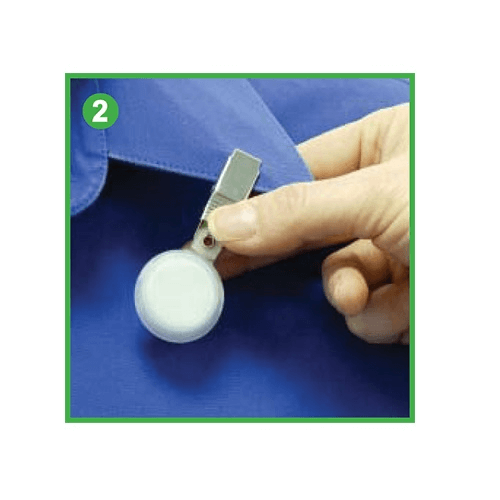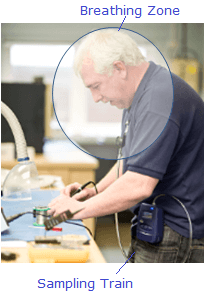

AIR SAMPLE BREATHING ZONE SOFTWARE
With the availability of computers and statistical software programs available today, much of the statistical “grunt” work can be performed for us making it easier to employ a random sampling strategy. Statistically speaking, there’s always a chance of making the wrong decision no matter how confident we are but by quantifying our level of certainty through a random sampling strategy, we are able to maximize our chance of making the right decision.

Figure 1 provides a comparison of a “worst-case” sampling strategy versus a random sampling strategy. Thus, a random sampling strategy is based on an objective analysis of the SEG. As a result, the variability in the data (due to work practice variations between workers, day-to-day variations, process variations, etc.) is measured and used to estimate the exposure parameters. Of exposures eliminates such biases since samples of the population are selected via a random mechanism. As a result, there is no way to measure the accuracy of “worst-case” samples (Albright, Winston, & Zappe, 1999) and the conclusions about exposure include potential biases of our judgments on the conditions of the job, work practices, and/or other conditions that we believe have an impact on exposure. However, because our judgment is usually not as good as we think, “worst-case” (i.e., judgmental samples) are likely to contain our own built-in biases. A limitation with employing a “worst-case” sampling strategy is that it requires the industrial hygienist to recognize the “worst-case” conditions, which may include a “worst-case” exposure judgment about the specific task and/or a specific work practices unique to an individual worker. The primary advantage of using a “worst-case” sampling strategy is that fewer samples are required to be collected, making it less costly and less time consuming than using a random sampling approach.
Estimate the full-shift TWA concentration over one workshift based on short-term (or grab) samples for a single worker or SEG.īoth “worst-case” sampling strategies and random sampling strategies have their advantages and limitations. Describe the 15-minute TWA concentrations over one workshift for a single worker or SEG. Describe the 8-hour time-weighted average (TWA) concentrations over different days for a single worker or SEG. Some applications of a random sampling strategy include the following: Decisions on the acceptability of the exposure profile can then be determined with a known level of confidence based on the central tendency and spread (or dispersion) of the sample distribution. Such a day would subjectively be considered the “worst-case” exposure period and targeted for evaluation.Ī random sampling strategy requires workers within a SEG and the sample periods to be randomly selected and subsequent statistical analysis of the exposure data. For such workers, a “worst-case” exposure might occur on a day that their process unit generates the highest production output. For example, plant operators who have similar job duties within a production unit of a plant may be identified as a similar exposure group (SEG). If no “worst-case” sample exceeds the occupational exposure limit(s), we can be subjectively satisfied (but not statistically confident) that the exposure profile is acceptable. In “worst-case” sampling, workers who are subjectively believed to have the highest exposures are non-randomly selected. The broad difference is that “worst-case” sampling involves more subjectivity than a random sampling approach. The two types of sampling strategies to consider when planning an exposure assessment study are “worst-case” sampling and random sampling. However, the exposure assessment strategy that is employed depends on the purpose and goal of the monitoring and what the sample(s) should represent. Since it is often impossible (or not practical) to measure every persons’ actual exposures to the chemical or physical agent, judgments regarding the acceptability of exposure are usually made based on an estimate of the person’s dose via representative sampling. However, in order to measure a worker’s “actual” exposure, a monitor would be required to be placed in his/her breathing zone each and every day, which is typically cost prohibitive and time-consuming. An industrial hygiene exposure assessment is the process used to evaluate a person’s exposure to a chemical or physical agent.






 0 kommentar(er)
0 kommentar(er)
